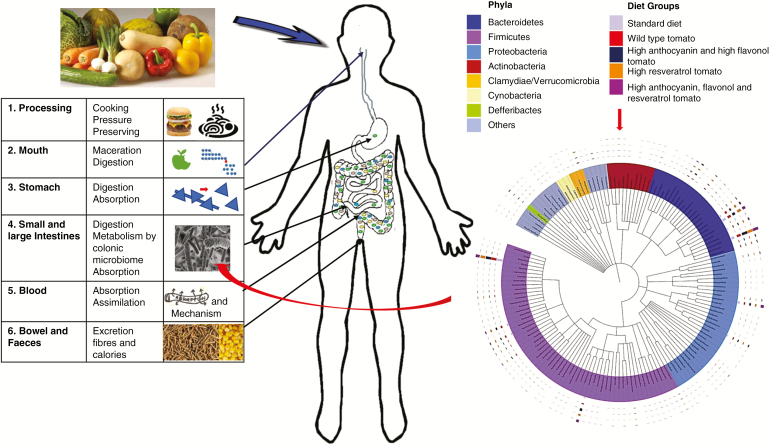Fig. 3.
Summary diagram of the processes impacting plants and plant-based foods in the diet. Processing of foods impacts their chemistry, physical properties and digestibility. Once ingested, maceration and digestion by amylases, proteases, lipases, etc., impact the bioavailability of macronutrients, micronutrients and phytonutrients. Dietary nutrients may impact the composition and functioning of the GI microbiota, which predominantly resides in the colon. Changing microbiota functionality may impact the further digestion of food, nutrient absorption, nutrient metabolism in the colon, removal of toxins and pathogens and signalling, especially satiation. Nutrients, or their metabolites, will be absorbed through the gut and enter the bloodstream, where they may have a wide range of physiological effects. Some material, particularly insoluble fibre, will be excreted. Undigested nutrients will also be excreted and may limit the calories and nutrients redeemable from foods. The panel on the right shows the complexity of the different bacterial phyla in the microbiota of mice using a circular phylogenetic tree colour-coded for the different phyla. The bars above the genera summarize the impact of diets enriched in regular tomatoes (red), high anthocyanin and flavonol tomatoes (dark blue), high resveratrol tomatoes (orange) and high anthocyanin, flavonol and resveratrol tomatoes (purple) compared to the standard diet (grey) on the composition of the microbiota. A large bar of the colour of the supplemented diets above each bacterial group that was particularly enriched by specific polyphenol-rich diets is shown (from Scarano et al., 2017).

